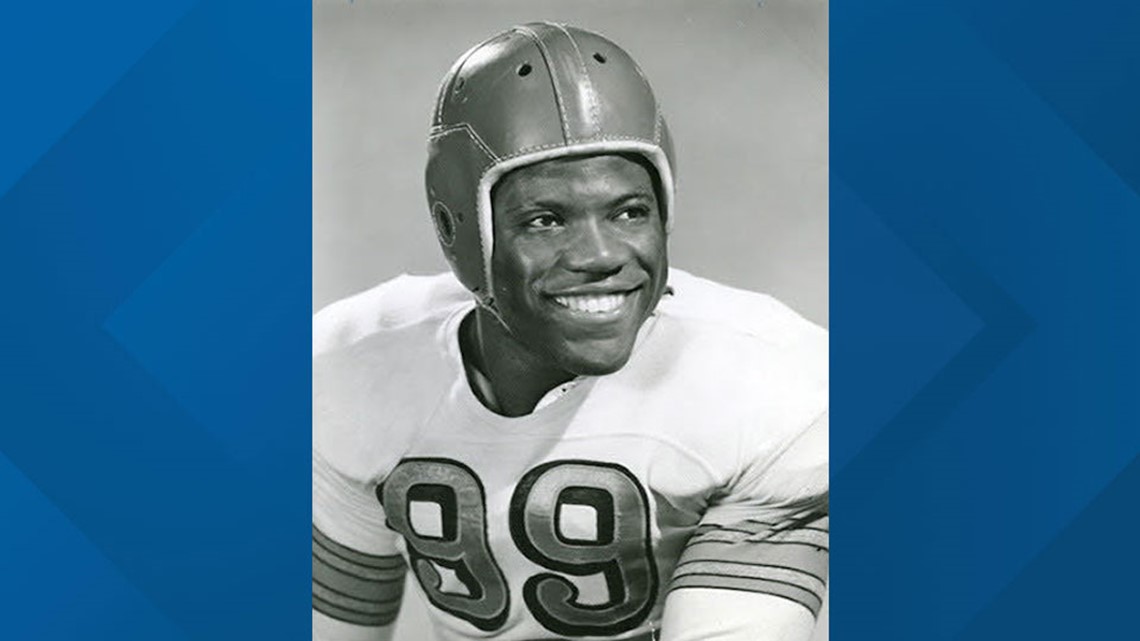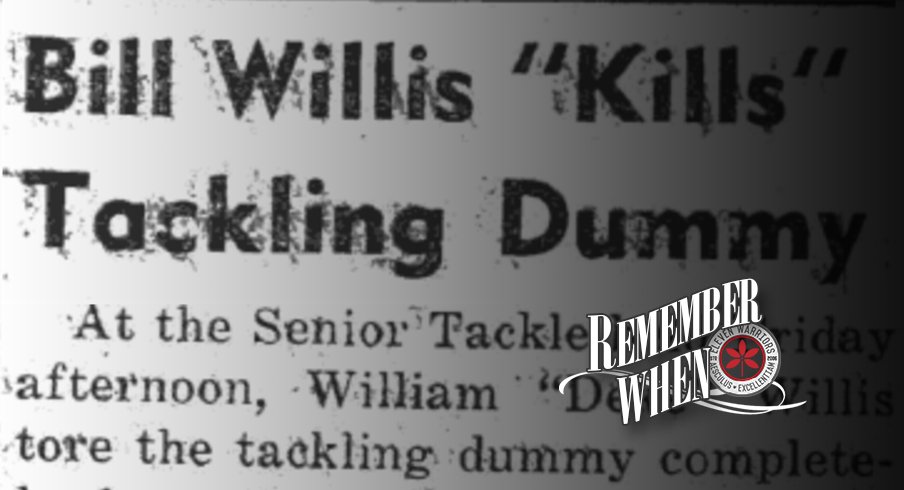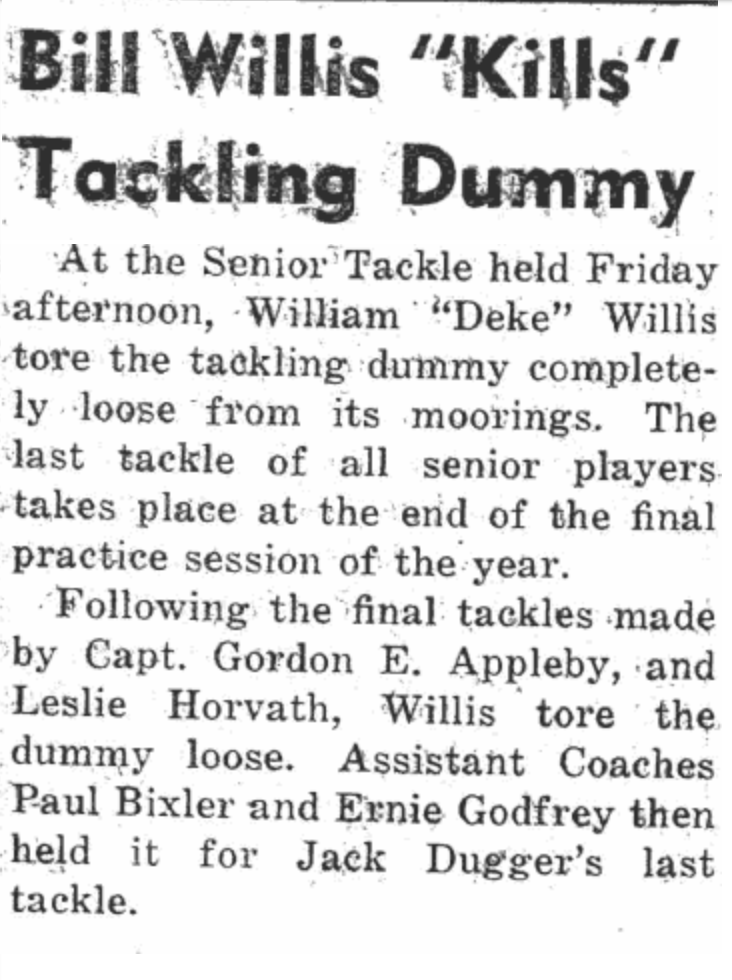Bill Willis: Speed, quickness carried Ohio lineman to 2 Halls of Fame
Buy Now
Bill Willis, Columbus East.
Oscar Hinojosa
At 6-foot-2, 200 pounds, Bill Willis would be the prototype running back in football today. But "The Cat" insisted on becoming a lineman. Although he was on the small side even then for that era, the Columbus East product was so quick, so fast, he was a mismatch.
Foes for years argued no human being could get off the mark that fast, at least legally. The Cleveland Browns took full advantage of The Cat's quickness.
Bill Willis, of Ohio State via Columubs East High School, helped crash the color barrier with the Cleveland Browns, along with teammate Marion Motley. He is featured in Ohio's Autumn Legends, Volume II.
"The press book had a memo to photographers that Willis must be shot at 1/600th of a second to capture his speed," recalled Sports Illustrated's pro football writer Paul Zimmerman.
A famous photo showed coach Paul Brown down on all fours on the practice field, looking to see if Willis was off-side as so many claimed. He could find no evidence of it.
That kind of athletic ability led Willis to a brilliant career in the sport, and a hallowed place in the memories of all who saw him play.
"He often played as a middle or nose guard on our five-man defensive line, but we began dropping him off the line of scrimmage a yard or two because his great speed and pursuit carried him to the point of attack before anyone could block him," Brown said. "This technique and theory was the beginning of the modern 4-3 defense, and Bill was the forerunner of the modern middle linebacker."
It all began at Columbus East High School. Bill's older brother, Claude "Deacon" Willis was a star at fullback for the Tigers. Six year later, when Bill came along, he wanted nothing to do with comparisons to his standout sibling. Instead, Bill insisted on a line position. A compromise was struck with coach Ralph Webster, and Bill started at end as a sophomore in 1938.
Columbus East was not a good football program, but by 1939 Willis was a star. He left a lasting impression on future Ohio State and Cleveland Browns teammate Gene Fekete in a game at Findlay that fall.
"The only recollection I have of that game is that we had a fifth man in our backfield, and it was him," Fekete said of The Cat.
Willis was an All-City performer in Columbus as a senior, and his coach hoped to send him to Illinois. Ohio State had rebuffed Bill's older brother when Francis Schmidt was the coach, with racism the probable unspoken factor. But when Paul Brown replaced Schmidt, the new coach was intrigued by Willis, and offered him a chance to play for the Buckeyes.
It was a windfall.
Willis started at tackle as a sophomore, no small feat in 1942 as the Buckeyes won the national championship. That spring he competed for the Ohio State track team too, and ran in the 100-yard dash at the Penn Relays. A couple of months later he was drafted. Ironically though, one of the greatest athletes of his generation was classified as 4F for having varicose veins.
So, he returned to football and became Ohio State's first black All-American in 1943. As a senior in 1944, Willis was again an All-American on an undefeated team that finished No. 2 to Army in the national polls.
By 1945, Bill figured his playing days were over. There were no blacks in pro football at the time, so he became the athletics director and football coach at Kentucky State College. But he stayed just one year, largely thanks to Paul Brown.
Now establishing the Cleveland Browns in the All-American Football Conference, Brown inked Willis to a $4,000 contract on Aug. 7, 1946. Three days later Marion Motley signed with the Browns, too. Earlier that spring, the Los Angeles Rams signed Woody Strode and Kenny Washington to officially break the color barrier, but neither was an impact player. Willis and Motley were the real trailblazers, and both wound up in the Pro Football Hall of Fame.
"(Motley) and Bill Willis made a big difference for the Browns," said Joe "The Jet" Perry, a running back for the San Francisco 49ers. "Skin color didn't matter to Paul Brown. He was going for the best players."
The Browns were loaded with them, and wrecked the AAFC because of it. Cleveland won the league title all four years and was invited into the NFL in 1950. The step up in competition did nothing to derail the Browns or Willis.
They immediately dominated the NFL too, capturing the 1950 league title, and twice dumped the defending league champion Philadelphia Eagles in the process.
Willis played four years in the NFL, and was an All-Pro each season. He also played in three Pro Bowls.
"The first guy that ever convinced me that I couldn't handle anybody I ever met was Bill Willis," said Chicago Bears center Clyde "Bulldog" Turner. "He didn't look like he should be playing middle guard, but he would jump right over you."
That was not a unique opinion.
"He moved so fast that guys who were almost 100 pounds bigger couldn't handle him," said Chicago running back Bobby Watkins. "He was almost unstoppable he was so quick."
Willis was inducted into the College Football Hall of Fame in 1971. He was inducted into the Pro Football Hall of Fame in 1977.
"Nowhere in
Winning Football by Bernie Bierman or the rest of my library did it describe what Willis did, how he could beat the center before he got out of his stance, how he would race the ball into the backfield," Zimmerman recalled. "Willis ... was, you see, the fastest interior lineman who ever played the game."
Those interested in learning more about Ohio's football history are strongly encouraged to purchase Ohio's Autumn Legends, Volume I & Volume II, by Larry Phillips. Both editions come in Kindle, paperback and hardback, and all are available at Amazon.com.
https://www.richlandsource.com/spor...xeqicrPwom-R4LX4D9BC5mtkfSb8zi7mVIrQM-uQ81Caw










